Glycolic Acid
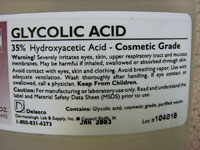
Glycolic acid belongs to the group of α-hydroxy acid (AHA). It is derived mainly from sugar cane, but also from fruits such as pineapple and unripe grapes. Citric acid from oranges and other citrus fruits also fall under the same classification as glycolic acid.
Glycolic acid is generally used as a natural skin exfoliant and moisturizer to improve the skin's appearance and texture. It can reduce wrinkles, acne scarring and hyper-pigmentation. On the superficial level, it works as an exfoliating agent by weakening the binding links holding the dead skin cells together in the upper layer of the epidermis,. As a result it removes excessive unhealthy dead skin together with the pigments, revealing the underlying skin with a smoother surface, more even skin tone and glow. It also helps to draw moisture into the newly exfoliated skin surface.
In the deeper level, it has some anti-oxidant properties to fight the free radicals, thereby reducing the damages. It also has a stimulating effect in the making of more collagen and elastin, so increasing the thickness and firmness of the dermis.
In the home setting, it is usually used as a cleanser or lotion in concentrations of 10% or lower. Dermatologists use it in much higher concentrations of 20% - 80% to induce a deeper peeling in more severe case of aged skin or acne scarring.
The side effects of using glycolic acid include stinging feeling, transient redness and dryness ( if not followed by a moisturize ). Too high concentration or over sensitive skin may result in excessive burning with a long period of redness, or even result in scarring or marks. Caution is necessary when using high concentrations.
Tretinoin
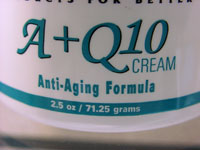
Tretinoin is a derivative of vitamin A. It alters the skin cells by modulating the gene expression inside. The effect is the speeding up as well as normalization of skin cell turnover. The making of melanin pigment inside the melanocytes are also suppressed by tretinoin. As a result, fine lines and wrinkles are reduced, skin discoloration and uneven skin tone improve, producing smoother, younger looking skin. It is also effective in treating acne as well as early stretch marks.
Tretinoin is a prescription medication, which requires an order from your physician. It comes in many different trade names, in different concentrations and different forms such as lotion or gel. It ranges from a concentration of 0.025% to 0.1% in cream vehicle. Gel vehicle penetrates the skin better and is available in concentrations of 0.01% to 0.025%.
Apart from being used on its own, it is frequently combined with other ingredients in skin care products. It works best when used in combination with alpha hydroxy acid preparations and one of the mostly used formula is together with glycolic acid, which produce a synergistic effect in improving the aging skin features.
Side effects of tretinoin include dryness, redness, and burning. This irritation is usually transient and reverses quickly as the skin becomes accustomed. Sun sensitivity is another problem and excessive sunlight exposure should be avoided. It should not be used in pregnancy, as it is not sure if it is safe. Oral form of tretinoin will definitely cause abnormal babies in pregnancy.
Vitamin C & E
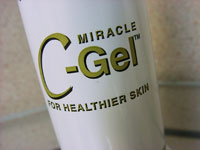
Vitamin C
Vitamin C is a water soluble vitamin. It is required for the growth and repair of tissues in all parts of the body. It is essential in forming collagen, scar tissue, tendons, ligaments, and blood vessels, and therefore for the healing of wounds, and for the repair and maintenance of cartilage, bones, and teeth.
It is a powerful anti-oxidant, fighting the free radicals, which cause most of the damages in skin aging. It also promotes an increase in collagen production. The benefits include increased skin elasticity, reduced fine lines and wrinkles, improved skin clarity and reduced uneven pigmentation.
In skin care products it is in the form of L-ascobic acid. In order for anti- aging benefits to be realized, it should contain at least a 10% L-ascorbic concentration with a pH level of less than 3. When Vitamin C serums are fresh, they are mostly clear in colour. Exposure to sunlight will cause the product to be oxidized, turn brown, and become ineffective, therefore it is packaged in opaque bottles.
To make it to be more stable, it is varied to present as ascorbyl palmitate and magnesium ascorbyl phosphate in some skin care products. They are also less irritating to the skin.
Vitamin E
Vitamin E is a fat soluble vitamin which consists of eight related molecules known as tocopherols. Alpha-tocopherol is the most biologically active form, which is used in skin care products.
Like Vitamin C, Vitamin E is also an antioxidant that protects body tissue from free radicals, and therefore from aging. It also promotes healthy circulation and is believed to act as a protector against environmental pollutants. It is also useful in improving skin dryness and lots of moisturizers contain Vitamin E.
Vitamin K
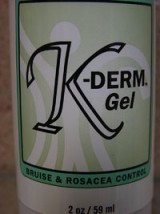
Vitamin K is a fat-soluble vitamin. It is necessary for proper bone formation and blood clotting by helping the body transport calcium.
Because of the concept that dark circles under the eyes are partly due to blood leakage from unhealthy blood vessels, it has been used successfully by dermatologists in this treatment, as well as in treating bruising on the face. It is particularly effective when combined with retinoids.
Copper Peptides
Copper is a trace element found in our cells. Peptides are small fragments of proteins and some have an avid affinity for copper, to which they bind very tightly. The resulting compound including a peptide and a copper atom has been known as a copper peptide.
Copper peptides can be used for skin regeneration in many ways for better skin care. They have anti-oxidant properties by stimulating the antioxidant enzyme superoxide dismutase, and neutralise the damaging free radicals in the skin. They promote the degradation of abnormally large cross-linked collagen, while promote the synthesis of normal collagen, as well as elastin, proteoglycans, glycosaminoglycans and other elements of the skin matrix. The result is a particularly significant effect in promoting a faster, better and cleaner healing, and skin remodelling.
Copper peptides therefore improve fine wrinkling; elasticity and firmness of skin; facial pigmentation and sun damage. Skin thickness is also increased in some studies.
In one small study, copper peptides promoted collagen synthesis in the intact skin, and yielded a stronger stimulation of collagen production than tretinoin or vitamin C.
Because of the healing enhancement, and also their anti-inflammatory effect, copper peptides augment the results of the skin rejuvenation treatments based on controlled skin injury, such as laser resurfacing, dermabrasion and peels. There are skin care products containing copper peptides taken from soy proteins.
Although copper peptides are a promising skin treatment with a good safety profile, exaggerated use can have an opposite effect and should be cautioned.
Hydroquinone
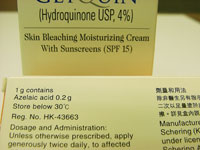
Melanin is made by the melanocytes in the basal layer of the epidermis. It is then transferred to the surrounding keratinocytes. It is lost naturally together with the keratinocytes as they migrate upward and shed at the surface, completing its own metabolism.
Hydroquinone is used mainly as a whitening agent. Hydroquinone products are popular for their skin-lightening properties in Asian and African cosmetics markets. In the U.S., they also are marketed for reducing age spots and blemishes. To understand how it and other whitening agents work, it is essential to know the synthesis process of melanin. The basic building block is tyrosine :

Hydroquinone can decrease the formation of melanosomes inside the melanocytes, as well as disintegrate their structures. It inhibits the tyrosinase, without which the entire manufacturing process is interrupted. It is a very effective whitening agent. It can fade many different pigment problems. However it normally takes at least a few months to see the result because it only blocks the making process, but cannot break down the already existing melanin, which needs time to get lost naturally. To enhance the effect, it can combine with tretinoin.
Hydroquinone is oxidized easily by the air and turns brown, but this does not affect the bleaching effect and can continue to be used. It is normally used only once at nighttime, because if used in the daytime and get exposed to sunlight, it could make the pigment worse. Some preparations mix it with strong sunscreen to allow for daytime use but it is best avoided.
It can irritate the skin a lot and cause redness. After the bleaching, the colour may not match that of the surrounding skin. The current concentration available is usually between 2 - 4%. If a higher concentration is used for a long period, it could lead to a pigment called Ochronosis, which is dark brown to black, and is not amenable to treatment. Another potential problem is the direct destruction of melanocytes, which can result in local white patches.
There are many skin-lightening products containing hydroquinone in the U.S. Currently, products that contain up to 2% of hydroquinone may be sold in the U.S. without a prescription, and prescription skin-lightening products may contain up to 4%.
Hydroquinone has already been banned in Japan, the European Union, and Australia, as the ban is being considered in the US. The reason is the potential Onchronosis as mentioned above, as well as some evidence that it may cause cancer in rodents animal, although its cancer-causing properties have yet to be proved in humans.
Azelaic Acid
Azelaic acid is a naturally occurring dicarboxylic acid that is found in grain, and is also made on the human skin by the normal yeast commensals. Its function is similar to that of hydroquinone. It can inhibit the tyrosinase, but will not cause direct damage to the melanocytes.
Its effect can be enhanced if used together with tretinoin. It can lighten epidermal type of melasma, but not really effective against the dermal type. Clinical studies showed that it is as effective as 4% hydroquinone in this, with 65 - 70% improvement after using it for 24 weeks.
Azelaic acid can be used to treat mild to moderate acne because of its anti-bacterial property of inhibiting the bacteria (Propionibacterium acnes and Staphylococcal epidermidis) inside the follicle; as well as keratolytic property by normalising the disordered growth of the skin cell lining the follicle. It is also used as a topical treatment for Rosacea, due to its ability to reduce inflamation.
Azelaic acid may cause some mild skin irritation but rarely cause allergic reaction. The good thing about azelaic acid is that it will not cause Onchronois or local white patches.
Arbutin
Arbutin comes from the leaves of certain fruits, like cranberries, blueberries, and mulberries. Arbutin can also be found in pears. Chemically it is a derivative of hydroquinone. When it is broken down by a process called hydrolysis, it actually releases hydroquinone. Therefore it is not much different from hydroquinone in terms of its functions, and side effects, although the extra step makes the overall whitening process more progressive and less irritative.
Kojic Acid
Kojic acid is a by-product in the fermentation process of malting rice when making the Japanese rice wine. Similar to hydroquinone, it inhibits the enzyme tyrosinase, as explained above. This action is achieved through binding the copper ions, which is need to activate the tyrosinase.
Kojic acid is usually combined with other whiteners in use, for example glycolic acid. It is a much safer alternative to skin bleaching than hydroquinone, without the nasty side effects mentioned.
Kojic acid is not very stable and its colour can change after oxidation. Kojic dipalmitate is a good alternative as it is much more stable in formulations, and also has the added benefit of being an excellent anti-oxidant.
Epidermal Growth Factor (EGF)
It was mainly used in the early treatments for severely burnt skin. It is now produced by a genetic engineering process using a bacterium called E. Coli.
EGF is a highly efficient cell division factor with many biological effects. It can stimulate the growth and proliferation of skin, and accelerate the healing process of damaged epidermis. Local application of EGF can be used for damaged skin in surgery, burns, or accidents.
As an anti-aging ingredient, it reduces and prevents wrinkles by actively generating new skin cells. The new skin cells appear as more youthful and vibrant.

